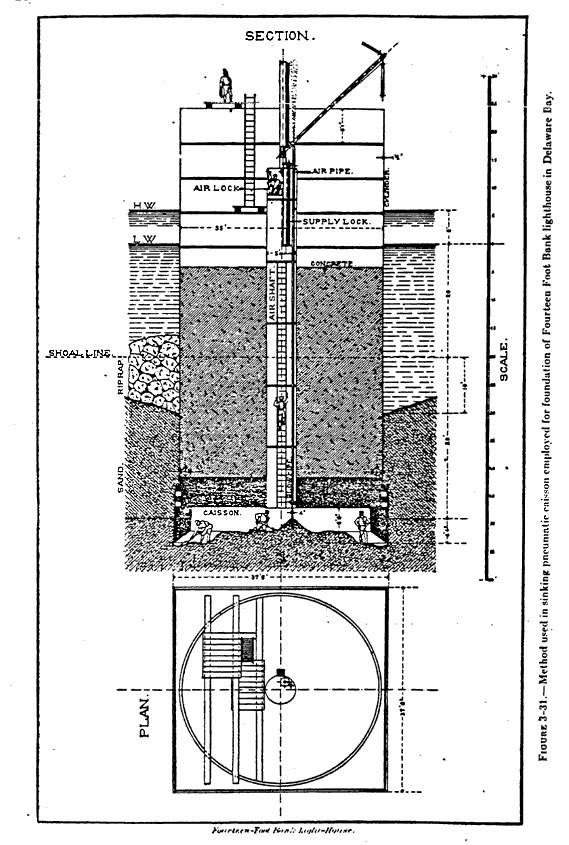The pneumatic caisson process was employed
to construct the Plum Beach Lighthouse foundation. This method
of construction was used as the bottom where the lighthouse
was to be built is sand, into which the foundation would need
to penetrate a considerable distance to withstand the overturning
effects of wind and ice.
A timber working chamber was built
on shore and launched. On this was placed three courses of a
cast iron cylinder, 35 feet in diameter, built up of plates
bolted together along their flanges. The caisson was towed to
the site of the lighthouse and was sunk in position, by
admitting water to the cylinder. An air shaft with an air lock,
through which the men passed to the working chamber, was
erected on the foundation cylinder and braced to shell plating.
Sufficient air pressure was maintained in the caisson to
keep the water out. The excavation was made in the caisson within
the cutting edges, the sand being blown out through a blow
pipe with in the air shaft. In this manner the caisson was sunk
to the desired depth. The space within the shell plating
was filled with concrete as the work progressed. When sunk to the proper depth, the cylinder was encircled by riprap
to prevent scour. A tower and dwelling was erected on the cylindrical
foundation pier.
Source: "United States Coast Guard Aids to
Navigation, 1945"
|
